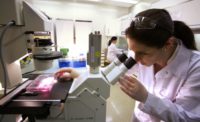The importance of cows’ byproduct feed
Research from Innovation Center for U.S. Dairy tackles waste and sustainability.

Photo courtesy of PeopleImages on www.gettyimages.com

Dairy cows have long nourished humans with their nutrient-dense milk and other dairy foods produced from it.
But that is far from the only benefit cows provide. They also are excellent up-cyclers with the ability to digest byproduct feeds in their unique four-chambered stomach. This means cows are:
- Recycling valuable nutrients, which are either indigestible or undesirable for human consumption and could otherwise head to a landfill.
- Consuming highly nutritious byproducts from crop processing that are used by dairy nutritionists as an important part of cows’ balanced rations.
Accepting byproduct feeds is a longtime part of dairy farmers’ commitment to sustainable food systems. Citrus pulp from the processing of orange and grapefruit juice is one example. Cotton seed hulls from the production of clothing is another. So is the leftover brewers’ grain from making beer.
While using these byproducts has been a common practice among the nation’s nearly 30,000 dairy farmers for generations, there wasn’t quantifiable research to show just how environmentally friendly and widespread this practice is.
However, we now have better information on this practice thanks to checkoff-led research conducted through the farmer-founded Innovation Center for U.S. Dairy. The results, in fact, show byproduct feeds offer a far more positive environmental impact than we had imagined.
The research received dairy checkoff funding and surveyed dairy nutrition consultants and feed industry representatives to learn more about the types of byproduct feeds and volume used. The results covered 33.5% of the country’s lactating cows, making it the most comprehensive survey conducted in the U.S. We learned that cows consume an estimated 26.5 pounds of byproducts each day, representing anywhere from 32 to 41 million metric tons nationally each year.
The findings align with the EPA’s Food Recovery Hierarchy, which prioritizes actions organizations can take to prevent and divert wasted food. Among the EPA’s recommended steps is using food scraps for animal feed, which includes unavoidable waste such as byproducts from production, postharvest and processing stages of human food supply chains.
We then compared the environmental impact — in terms of greenhouse gas emissions — of feeding these byproducts to composting or landfilling them instead. This is where dairy’s sustainability story reaches new, science-based heights.
We found that feeding byproducts reduced greenhouse gas emissions by 49-fold compared to landfilling them and by five-fold compared to composting them.
The conversation on sustainable food production will only gain more momentum among consumers and thought leaders alike. Dairy companies can use these powerful proof points to show our nation’s dairy farms are indeed providing environmental solutions and are powerful partners in sustainable food systems.
Looking for a reprint of this article?
From high-res PDFs to custom plaques, order your copy today!








